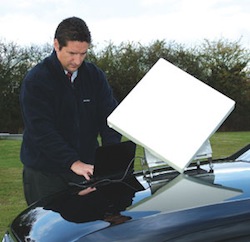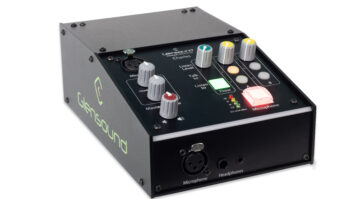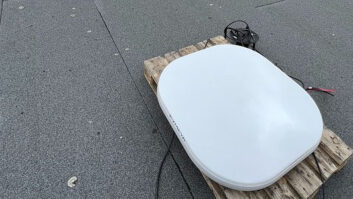
Wireless specialist Cobham has developed a field news system based on a wireless mesh network. The system, called MediaMesh, is particularly aimed at journalist teams sent to cover news stories at short notice, and who need to set up telephone and data paths as well as live video between the remote location and the headquarters newsroom. A wireless mesh network uses multiple radio nodes to create a mesh to cover a wider area and greater capacity. Although a typical network will have multiple nodes – wireless routers – only one, or two for resilience, need to be connected to the internet. The advantage of a mesh network is its resilience. If an individual node fails then the rest of the system picks up the workload. So the mesh is self-healing. An intelligent mesh can also use more than one wireless protocol: Wifi and a cellular technology, for example. That means that clients including laptops and smartphones can pick up the mesh without needing to be reconfigured. In the Cobham MediaMesh system the network is designed for multiple data formats including media. A wireless client on a camera, for example, means that the network can be used for live reports and two-ways without connections or set-up time. Similarly, the link to base can be via a Ka-band satellite dish, again with a mesh client. Alternatively, the link can be over the hotel’s ethernet, or using 3G or 4G cellular circuits in an emergency. The entire production set-up, including laptop editing and connection to the newsroom and telephony, is established simply by taking the equipment out of the case and powering it, with no pile of cables to plug up, nothing to lose and no prospect of wrong connections. Should the story get bigger, simply adding more nodes to the mesh increases the capacity, which again can be achieved without expertise because the wireless system automatically detects and incorporates additional devices.







